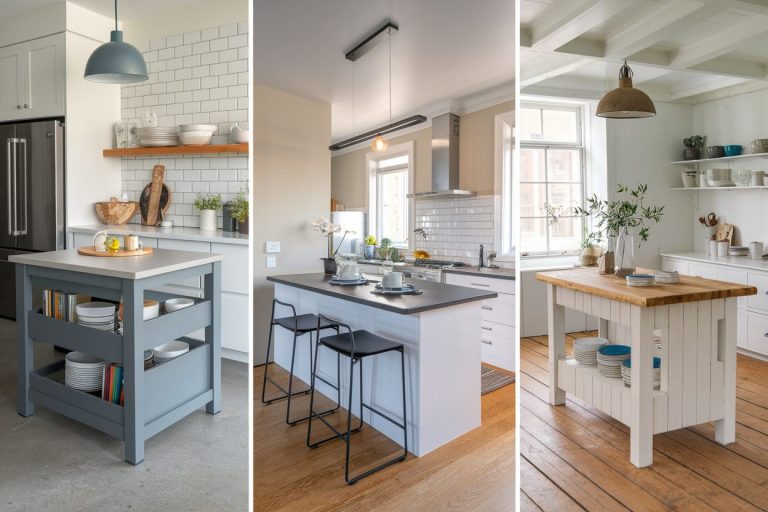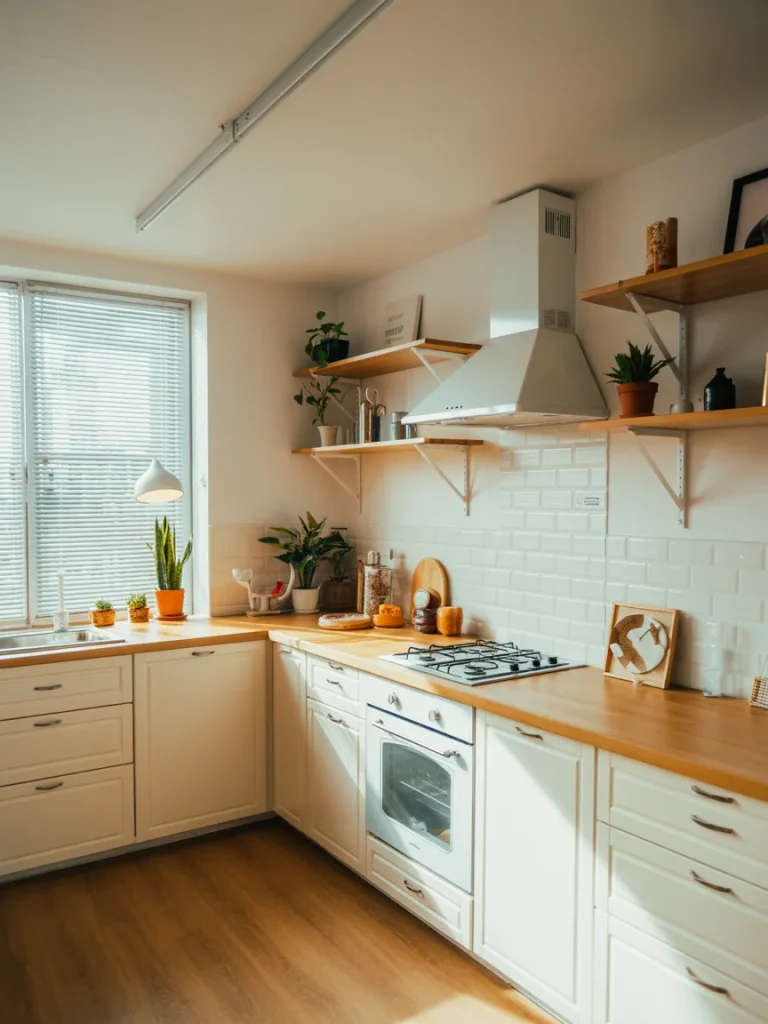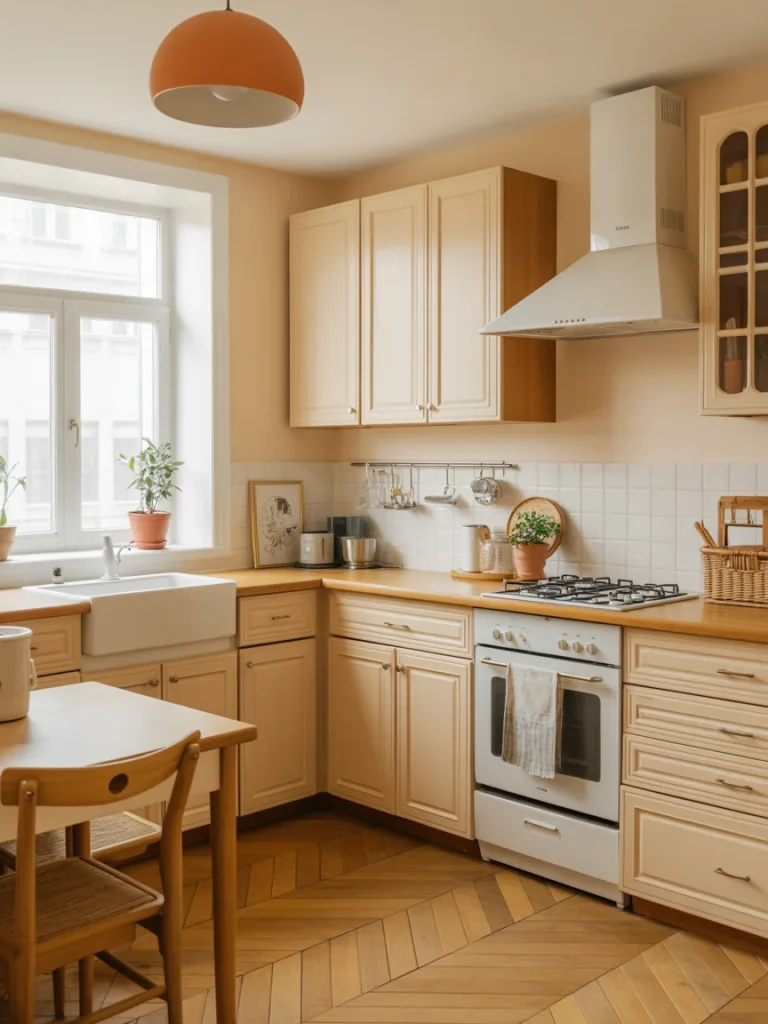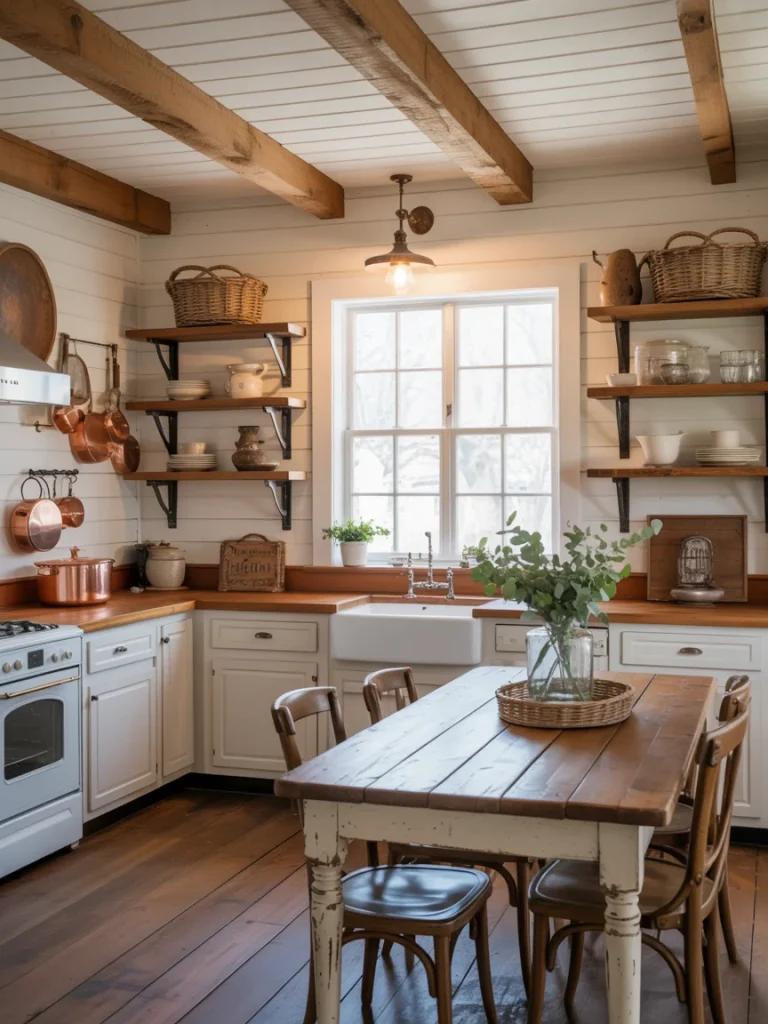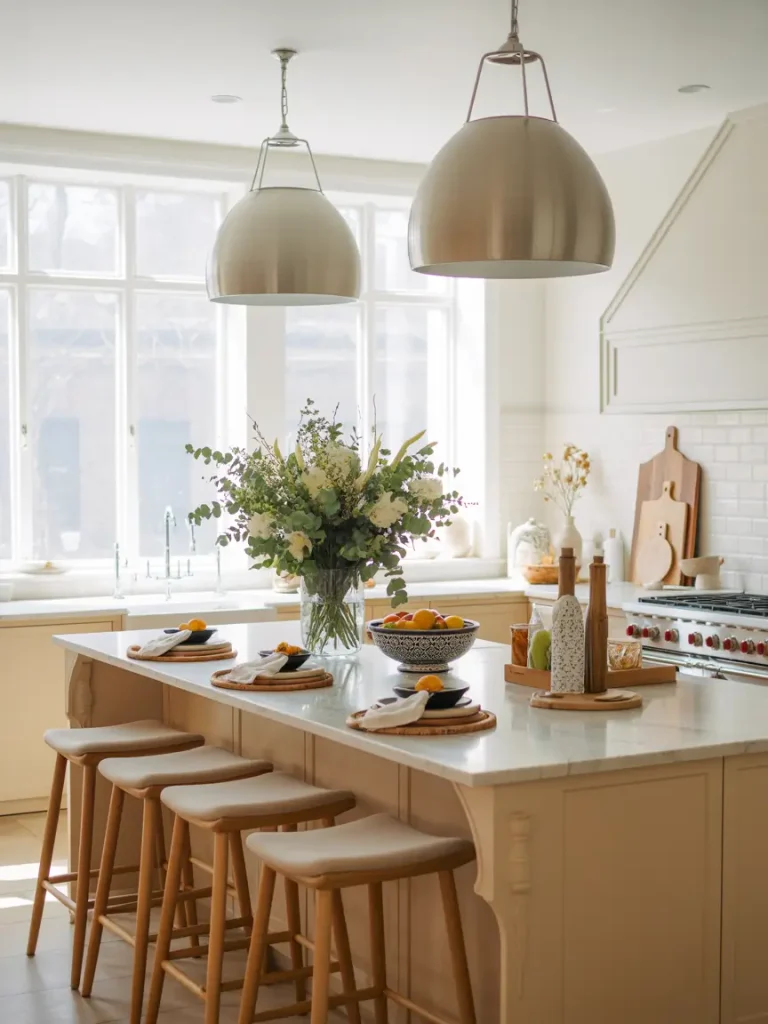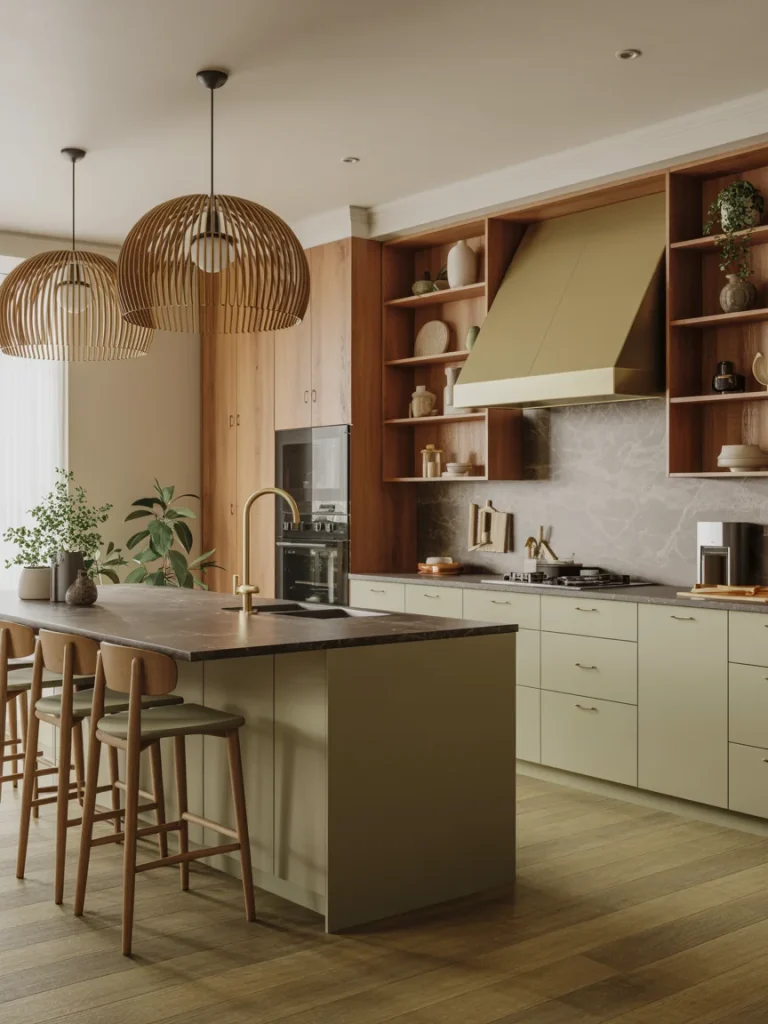If you like clean lines, soft colors, and a calm, cozy feel, a Japandi kitchen might be perfect. It mixes Japanese simplicity with Scandinavian warmth to create a peaceful, clutter-free space that feels like home.
In this guide, you’ll explore the core design principles behind Japandi kitchens, learn how to bring them into your space, and find inspiration to create a kitchen that’s as functional as it is beautiful.

What Is Japandi Style and Why Is It Perfect for Kitchens?
The term Japandi combines Japanese aesthetics with Scandinavian design—two philosophies rooted in simplicity, craftsmanship, and a strong connection to nature. While Japan focuses on minimalism and serenity, Scandinavia brings warmth, functionality, and hygge (a feeling of cozy contentment).
Together, they create a kitchen style that’s calm and practical. Whether you live in a small apartment or a big open space, Japandi works well. It helps you keep things simple, clear out clutter, and enjoy cooking in a more thoughtful way.
The Basics of Japandi Kitchen Design
Before you start decorating, it’s good to know the main ideas behind Japandi style. Japandi kitchens are all about:
- Simplicity – Clean shapes with no extra details
- Functionality – Everything has a clear use
- Natural look – Wood, stone, and other natural materials
- Balance – Mixing light and dark, soft and hard
- Purposeful living – A calm space that feels clear and peaceful
The Japandi Color Palette – Calm, Neutral, and Natural
The Japandi color palette is all about subtlety. You won’t find bright hues or overly sharp contrasts here. Instead, aim for colors that create a sense of peace.
Start with neutral bases:
- Soft white
- Warm beige
- Greige (gray + beige)
- Stone gray
Then layer in deeper, grounding tones:
- Charcoal or matte black
- Muted greens (sage or olive)
- Terracotta or clay
See how these tones work beautifully in real spaces through white and wood kitchen ideas.

Materials That Bring Japandi Kitchens to Life
Materials are essential in creating the tactile warmth of a Japandi kitchen. You’ll want a mix of soft and hard surfaces with a natural, matte finish.
Some go-to materials include:
- Light wood (like oak, ash, or birch)
- Dark woods (such as walnut for contrast)
- Stone countertops (like quartz or soapstone)
- Linen textiles for curtains or table runners
- Ceramic and clay for dishes or decor
- Brushed metal or black hardware (avoid glossy chrome)
Storage and Cabinetry – Beauty in Functionality
When it comes to Japandi kitchen cabinets, less is more—but that doesn’t mean sacrificing functionality.
Here’s how to keep it clean and practical:
- Flat-front cabinetry without ornate trim
- Hidden hardware or minimalist handles
- Soft-close drawers for a peaceful experience
- Neutral wood finishes or matte paint in subdued tones
- Open shelving for display-worthy pieces
- Closed cabinets for everything else to reduce visual noise
Ready for an upgrade? Browse versatile kitchen makeover ideas that align with Japandi aesthetics.
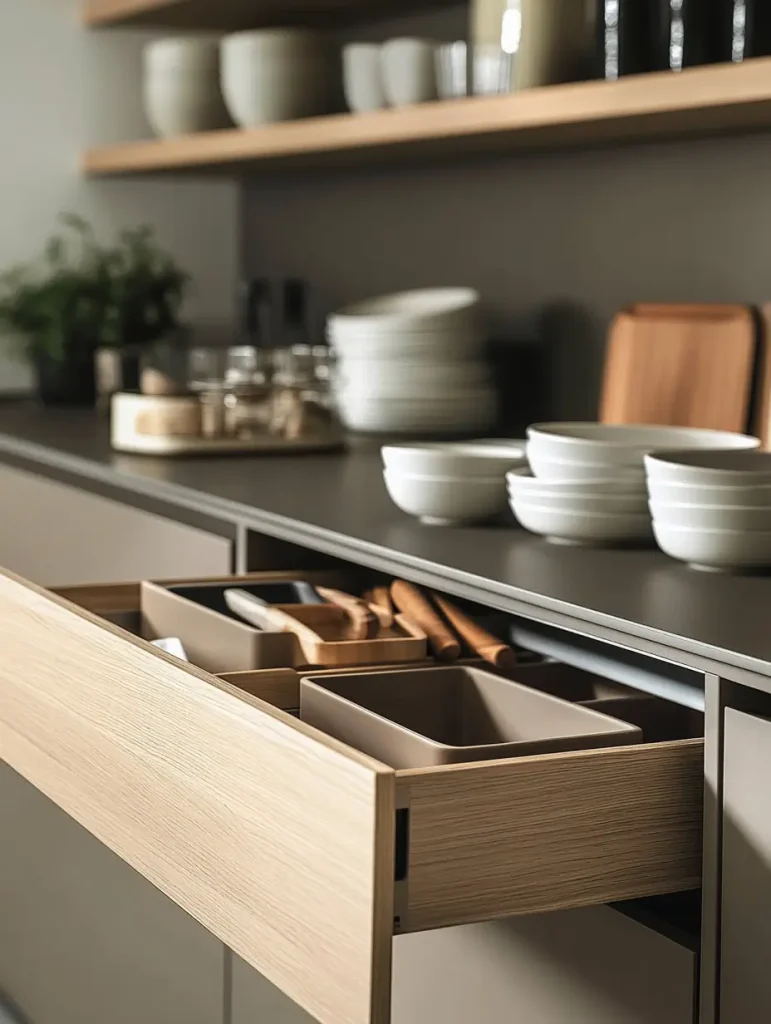
Furniture and Fixtures That Define Japandi Kitchens
The furniture and fixtures in your kitchen should echo the same calm, grounded energy.
- Low-profile islands or counters in wood or stone
- Simple bar stools with wooden frames and linen cushions
- Pendant lights in matte black, bamboo, or brushed brass
- Integrated sinks and minimalist faucets
- Open seating areas with neutral textiles
Small kitchen? These small kitchen island ideas are ideal for maintaining Japandi flow.
Minimal Touches with Meaning
Japandi doesn’t mean empty—it means intentional. Styling should feel light and effortless, with only a few well-chosen pieces on display.
Here are some ideas for Japandi kitchen decor:
- A wooden tray with ceramic bowls
- A single leafy branch in a stoneware vase
- Potted herbs on the windowsill
- Glass jars with dry goods
- Linen napkins folded on open shelves
- Wall-mounted hooks with purpose-driven accessories
How to Build Your Own Japandi Kitchen – Step by Step
Bringing the Japandi style into your kitchen doesn’t have to mean a full renovation. You can introduce elements gradually and still create a meaningful transformation.
Step-by-Step Ideas:
- Declutter: Remove non-essential items and start with a clean slate.
- Choose a soft, neutral palette: Repaint cabinets or walls in calming shades.
- Update your cabinet hardware: Opt for matte black or minimalist handles.
- Add texture: Use wooden trays, linen textiles, and ceramic decor.
- Switch lighting fixtures: Choose fixtures that feel warm and organic.
- Display mindfully: Keep only what you use or love within view.
The Benefits of a Japandi Kitchen Beyond Aesthetics
A Japandi kitchen doesn’t just look good—it supports a better way of living.
Why people love this style:
- Reduces visual clutter and promotes peace of mind
- Encourages mindfulness and simplicity in everyday tasks
- Easy to clean thanks to fewer items and smoother surfaces
- Timeless look that doesn’t go out of style
- Brings nature indoors, helping you feel more grounded
Japandi Kitchen Ideas for Every Home
Looking for real-life inspiration? Picture this:
- A small kitchen with floating oak shelves, matte black fixtures, and a sage green backsplash.
- An open-concept kitchen with a waterfall island, soft pendant lighting, and handmade pottery on display.
- A galley kitchen with stone counters, natural linen curtains, and minimalist bar stools by the window.
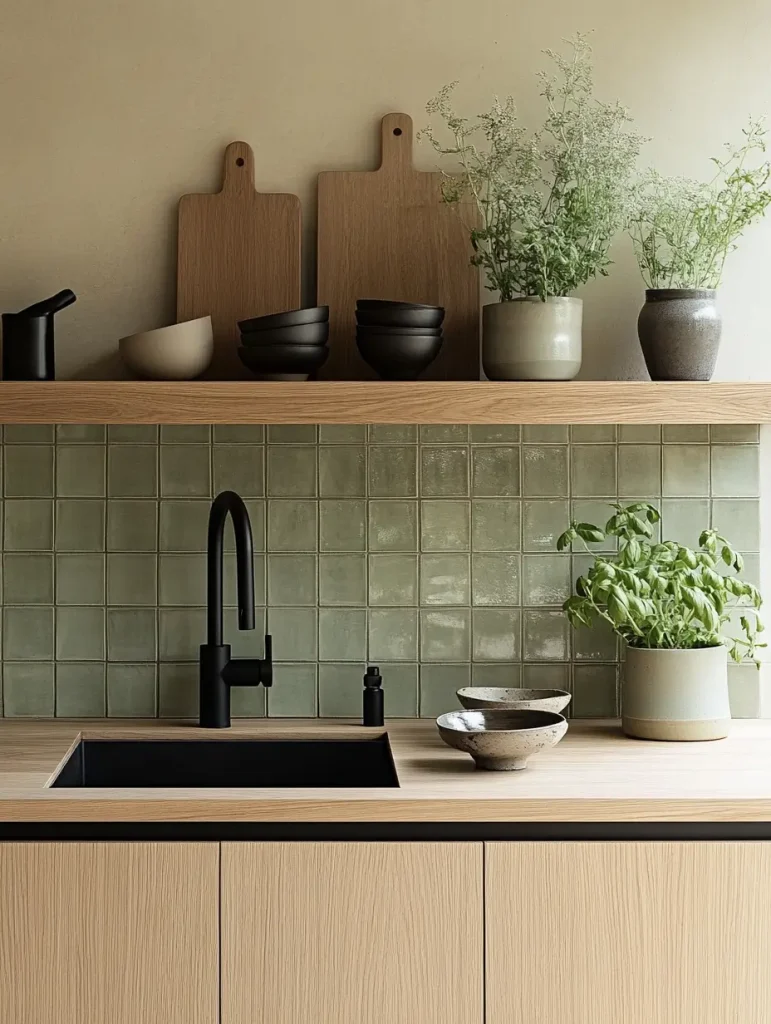
Finding Calm in the Heart of Your Home
A Japandi kitchen is more than a trend—it’s a lifestyle that prioritizes peace, beauty, and intention. Whether you’re planning a full makeover or adding subtle touches, this style helps you create a kitchen that supports how you want to live.
FAQs
What are the must-have elements for a Japandi kitchen?
Natural materials, soft neutral colors, functional design, and minimal, meaningful decor.
Can Japandi style work in small kitchens?
Yes! Its minimalist nature and smart storage ideas make it perfect for compact spaces.
Do I need all new furniture to create a Japandi look?
Not at all. You can work with what you have—just focus on simplifying, decluttering, and introducing natural textures.

